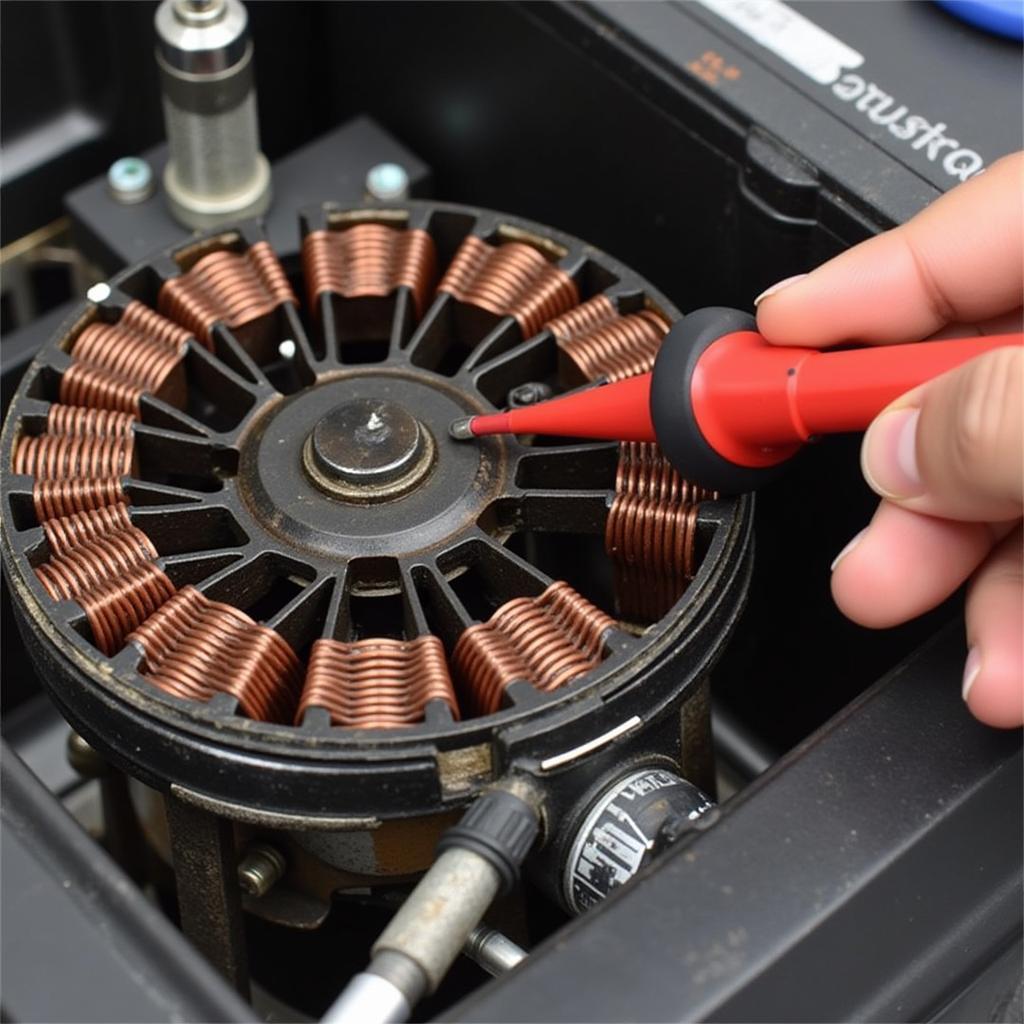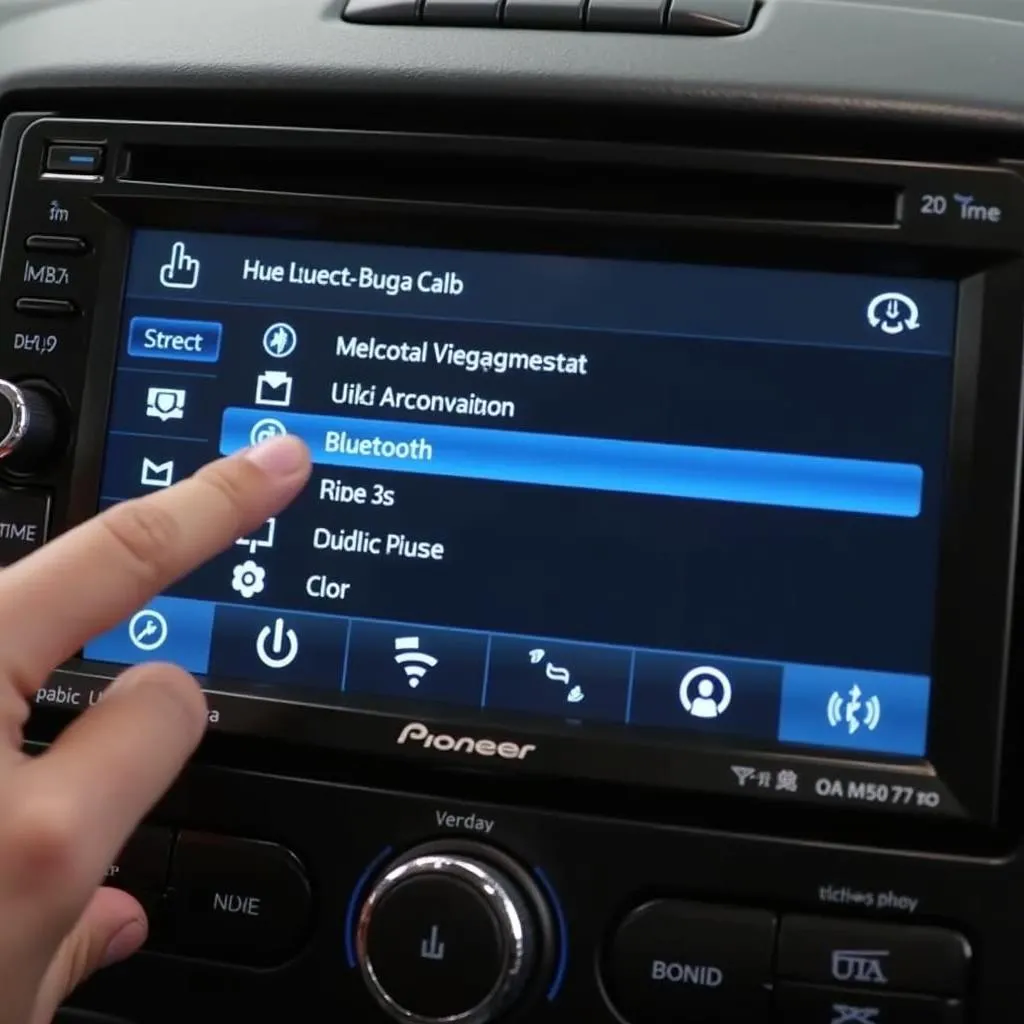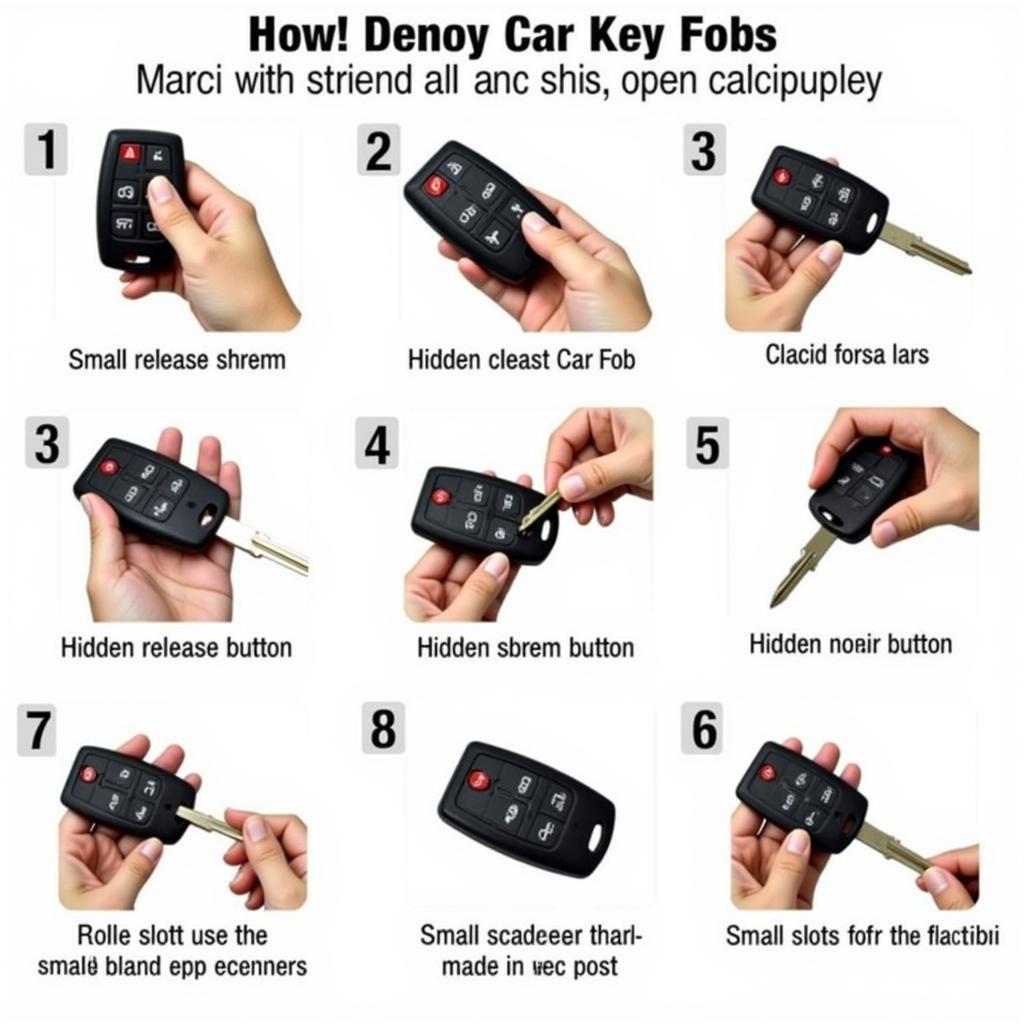Experiencing a dead battery while riding your motorcycle can be a jarring and dangerous situation. This article dives into the common causes of why your motorcycle battery might die mid-ride, offers troubleshooting tips, and provides solutions to get you back on the road safely.
Why Does My Motorcycle Battery Die While Riding?
Several factors can contribute to a motorcycle battery dying while riding. It’s not always a simple case of a bad battery. Understanding these potential culprits is the first step to fixing the issue. These include a failing charging system, parasitic drains, bad connections, or even an overloaded electrical system. Ignoring the problem can lead to further damage and potentially dangerous situations on the road.
Common Culprits: Charging System Issues
The most frequent reason for a dying battery while riding is a faulty charging system. The charging system, comprised of the stator, regulator/rectifier, and rotor, is responsible for keeping the battery charged and powering the electrical components while the engine is running.
The Stator’s Role
The stator generates AC power, which is then converted to DC power by the regulator/rectifier to charge the battery. A failing stator won’t generate enough power, leading to a depleted battery.
Regulator/Rectifier Problems
The regulator/rectifier converts the AC power from the stator to DC power and regulates the voltage to prevent overcharging. A faulty regulator/rectifier can either undercharge or overcharge the battery, both of which can lead to premature battery failure and dying while riding.
 Motorcycle Stator Inspection
Motorcycle Stator Inspection
Parasitic Drains: The Silent Battery Killers
A parasitic drain occurs when an electrical component continues to draw power even when the motorcycle is off. These drains can slowly deplete the battery over time, eventually causing it to die while riding. Common culprits include faulty alarm systems, aftermarket accessories, or even a glove box light that stays on.
Identifying and Eliminating Parasitic Drains
Identifying a parasitic drain involves using a multimeter to measure the current draw with the ignition off. Systematically disconnecting fuses can help pinpoint the source of the drain.
 Testing for Parasitic Drain
Testing for Parasitic Drain
Bad Connections and Overloaded Systems
Loose or corroded battery terminals and connections can disrupt the flow of electricity, leading to charging problems and a dying battery. Similarly, an overloaded electrical system, often caused by adding too many accessories without upgrading the charging system, can strain the battery and cause it to fail.
Checking Connections
Regularly inspect and clean your battery terminals and connections. Ensure they are tight and free of corrosion.
Managing Electrical Loads
Be mindful of your motorcycle’s electrical capacity when adding accessories. If you have a lot of added electronics, consider upgrading your charging system to handle the increased load.
Troubleshooting a Dead Battery on the Road
If your motorcycle battery dies while riding, try to pull over to a safe location. Check your battery connections for looseness or corrosion. If you have a multimeter, check the battery voltage. If you suspect a charging system issue, you may need to have your motorcycle towed to a mechanic for further diagnosis and repair.
Preventing Future Battery Problems
Regular maintenance is key to preventing battery problems. Keep your battery terminals clean and tight, have your charging system checked periodically, and address any electrical issues promptly.
“Regular battery maintenance is often overlooked but crucial for a reliable riding experience,” says John Smith, Lead Motorcycle Technician at Smith’s Cycle Repair. “A simple voltage check and cleaning of the terminals can prevent many headaches down the road.”
Conclusion
A motorcycle battery dying while riding can be frustrating and dangerous. By understanding the common causes and following the troubleshooting tips outlined in this article, you can identify the problem and get back on the road safely. Regular maintenance and proactive checks can prevent future battery issues and ensure a smooth and enjoyable riding experience. Don’t let a dead battery ruin your next ride!
“Don’t underestimate the importance of a healthy charging system,” adds John Smith. “It’s the heart of your motorcycle’s electrical system and essential for keeping your battery charged and your ride uninterrupted.”
FAQ
- How often should I check my motorcycle battery? Monthly checks are recommended.
- What is the average lifespan of a motorcycle battery? Typically, 2-4 years.
- Can I jump-start my motorcycle with a car? It’s possible, but proceed with caution due to voltage differences.
- How do I test my motorcycle’s charging system? A multimeter is needed to test the stator and regulator/rectifier output.
- What are the signs of a bad regulator/rectifier? Overcharging or undercharging the battery, dimming or flickering headlights.
- How can I prevent parasitic drains? Regularly inspect your electrical system and address any faulty components promptly.
- What should I do if my battery dies while riding? Pull over safely, check connections, and consider towing if a charging system issue is suspected.



